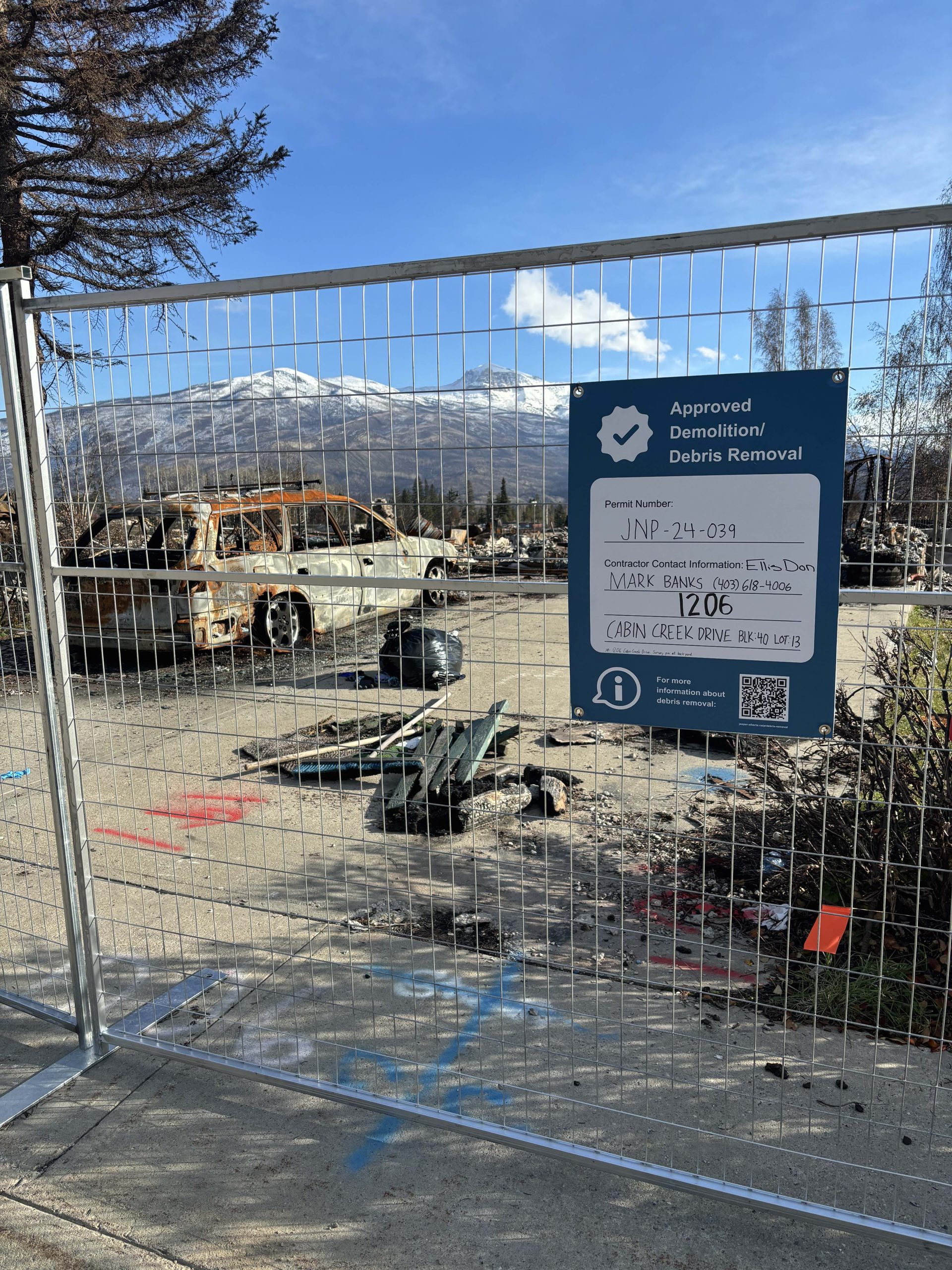More Jasperites are signing on to the Bulk Debris Removal (BDR) program in an effort to reduce costs and improve efficiencies for the clean-up of residential properties destroyed in the Jasper Wildfire Complex.
However representatives from the Jasper Recovery Coordination Centre are encouraging still more residents to participate in the collaborative approach to take advantage of a “turn-key solution” for the multi-layered process.
“That’s the domino that needs to fall if homeowners want their lease to be actioned quickly,” said Logan Ireland, Recovery Project Manager with the JRCC. “It’s in everyone’s interest collectively for leaseholders to act as expediently as possible.”
As of November 1, less than half (176) of the 355 leases in Jasper where structures had been destroyed were listed among those participating in the BDR program. Twelve demolition permits representing 52 properties had been issued by Parks Canada. More permits are anticipated as more applications are submitted to join the bulk program, according to project manager EllisDon.
“The JRCC is in support for any debris removal effort that contributes to a safe, cost-effective, complete recovery. EllisDon can do that and takes the load off residents,” Ireland said.
Last week, through open houses and a virtual town hall, representatives of the JRCC, EllisDon and the Insurance Bureau of Canada attempted to answer residents’ frequently asked questions and generally disseminate sound information related to the BDR program. While residents are under no obligation to participate, the bulk debris removal program was conceived as a “best-for-all” strategy and draws on lessons learned from similar disaster clean-up efforts following wildfires in Slave Lake (2011) and Fort McMurray (2016), according to Rob De Pruis, from the Insurance Bureau of Canada.
“Doing things in a coordinated fashion really helps protect you as a resident and makes sure you have sufficient funding available under your insurance claim to make sure you have enough money to rebuild,” De Pruis told attendees of an October 24 town hall.
While some leaseholders have elected to procure the services of local contractors for their site clean-up—and Ireland says he fully understands that different insurance policies limit certain debris removal options— the JRCC wants to ensure that the entire scope of the program is well understood by residents. Not only do all local, provincial and federal regulations have to be followed for the debris removal itself, but leaseholders wanting to clean up their properties must first engage the services of a qualified hygienist, as well as contractors to isolate the services (water/sewer) which feed into the lot. Much of the legwork of identifying professionals in those different scopes of work has already been done, said EllisDon’s construction manager, Dallas Lindskoog.
“When you introduce the hygienist scope…that pool is not large. It’s not impossible [for leaseholders to find qualified professionals] but it’s a step we’ve already done.”
Likewise, the costs and complexities with trucking potentially-contaminated debris to the West Yellowhead Regional Landfill—which has limitations on how much it can receive—have also been accounted for, Lindskoog said.
“We have a robust cost-tracking system which ensures we know where every single load comes from and what it contains so those costs are tracked to individual leaseholders,” he added.

During the open house, the JRCC covered FAQs related to backfilling and materials recycling; Parks Canada representatives explained what authorizations are required for obtaining demolition permits; and EllisDon described the difference in debris removal costs for homes with basements and those without.
Ireland emphasized that EllisDon’s ability to coordinate with industry leaders and regulators for this type of job will help prioritize safety, cost-effectiveness and expediency.
“You can find those solutions outside of the bulk debris removal program, but the benefit of going with EllisDon is their turnkey solution which guarantees economies of scale, and that it’s a complete solution,” Ireland said.
Originally, the JRCC had targeted November 30 as a date for debris removal completion. That has since been adjusted to spring, 2025.

“As reality has set in, the care and consideration that is required to do this all safely has determined that a longer window of time was needed,” Ireland said. “The new goal of having debris removed by spring 2025 supports the overall recovery effort by preparing Jasper to rebuild in the primary construction season.”
Bob Covey // bob@thejasperlocal.com


